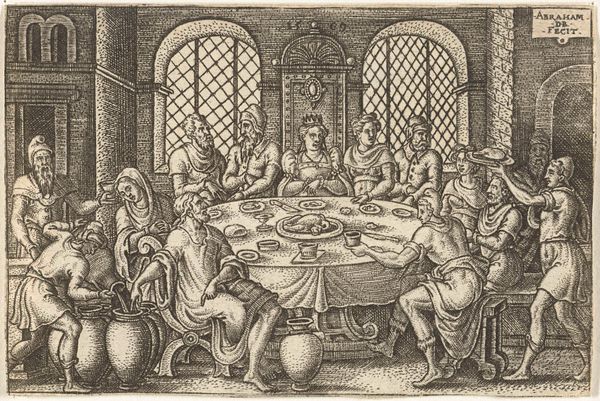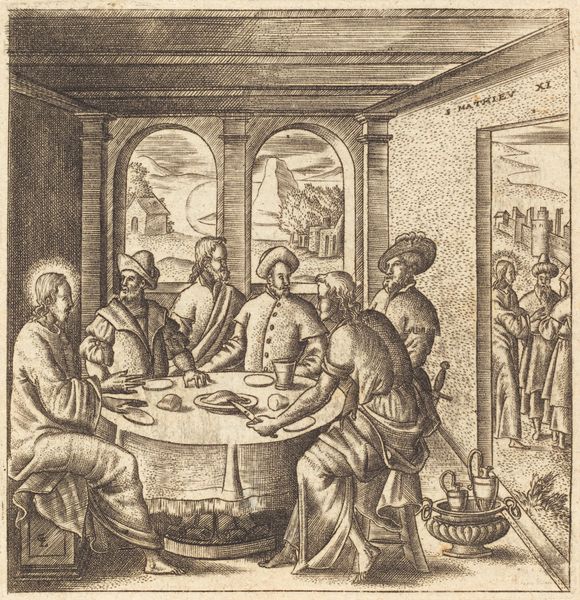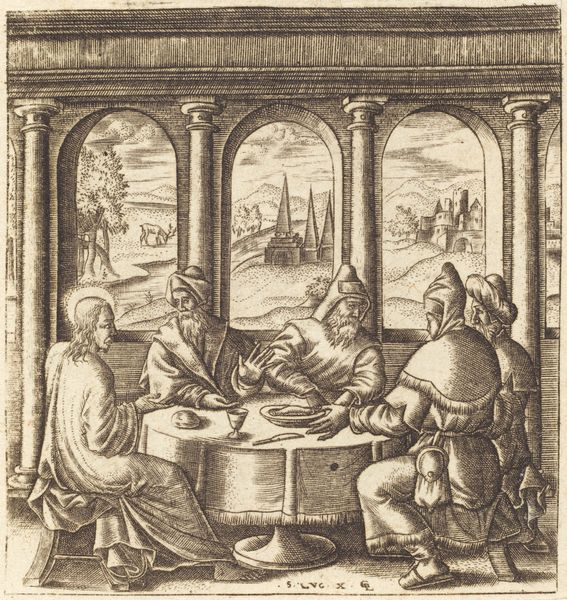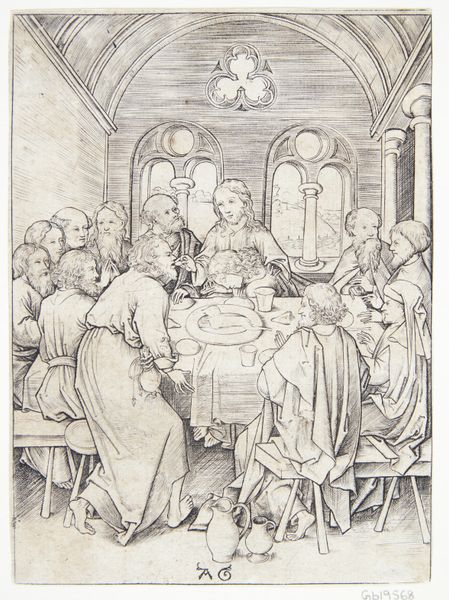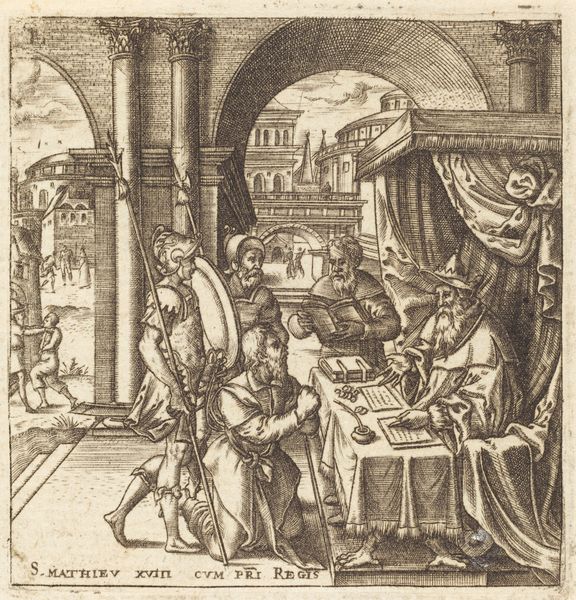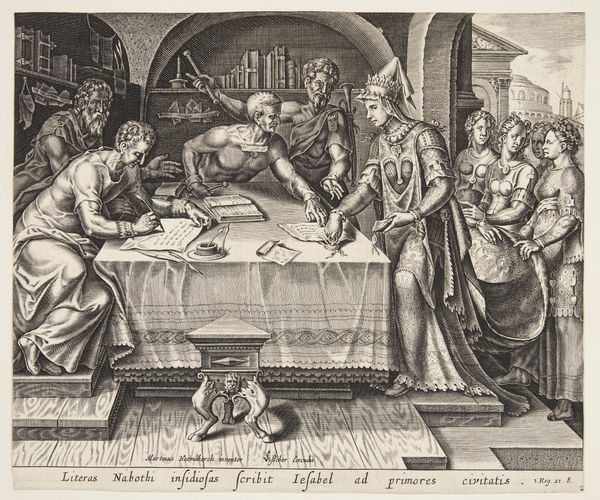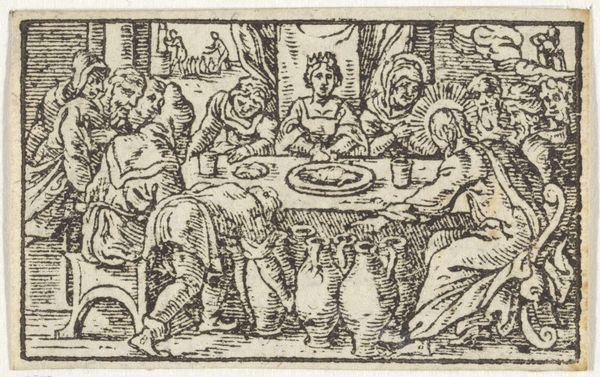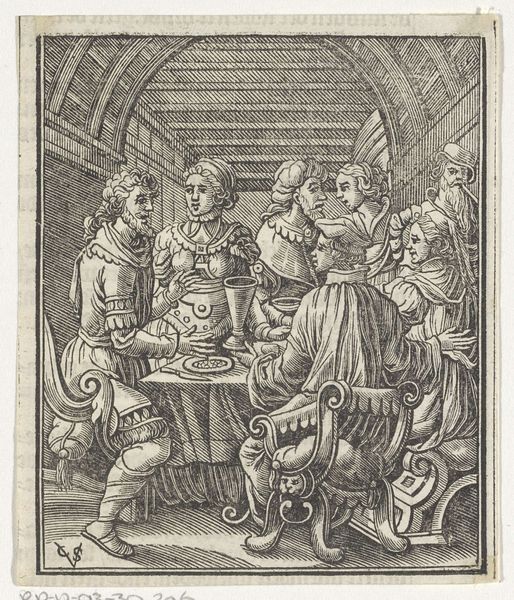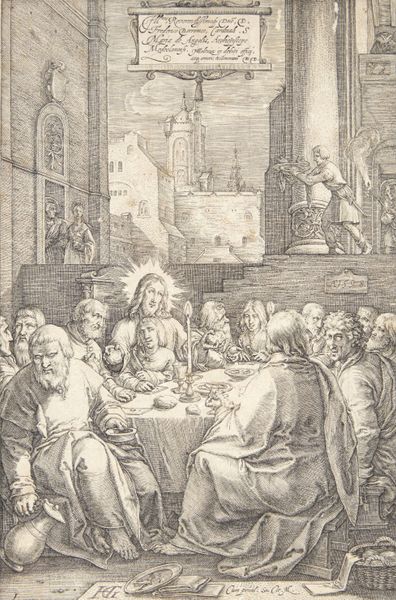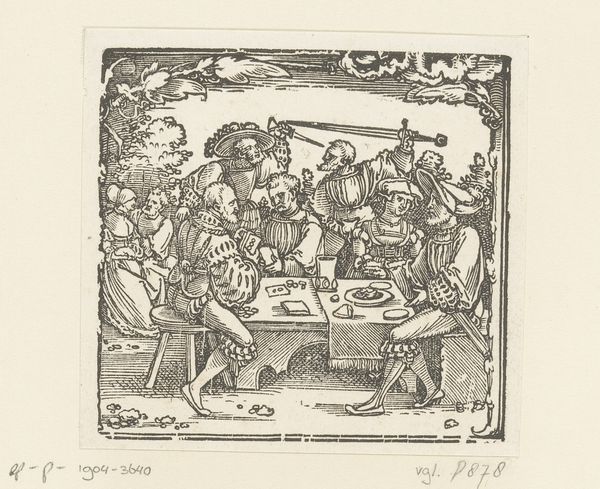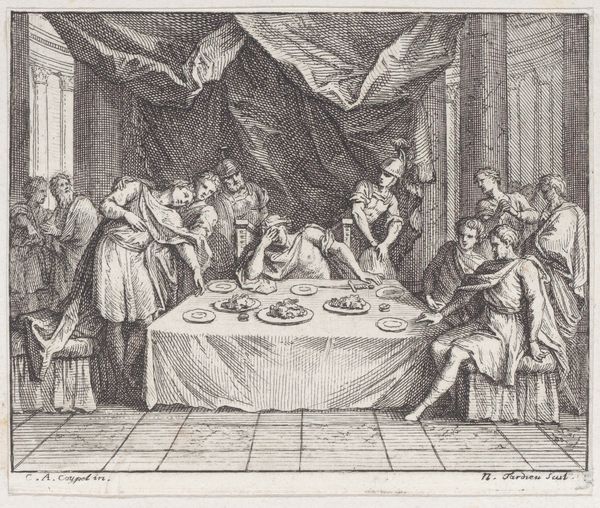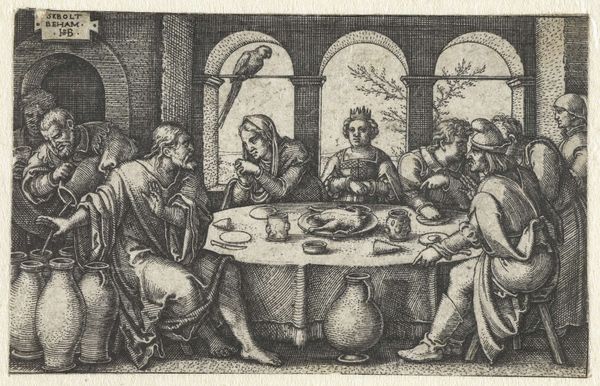
The Wedding at Cana (Christ Changes Water to Wine) c. 1576 - 1580
0:00
0:00
print, intaglio, engraving
#
pen drawing
# print
#
intaglio
#
11_renaissance
#
history-painting
#
engraving
Copyright: National Gallery of Art: CC0 1.0
Curator: Here we have “The Wedding at Cana (Christ Changes Water to Wine),” an intaglio print by Léonard Gaultier dating to circa 1576-1580. Editor: Immediately, I’m struck by the somber atmosphere. Even with the miraculous subject matter, there’s a real gravity in the subjects’ expressions and the overall composition. Curator: Note the technical precision of the engraving, the linear detail used to create the scene. Gaultier's command over line and shadow is evident; look at how he employs hatching and cross-hatching to render form and space, structuring depth, particularly with the drapery and architecture. Editor: And the wedding itself! The narrative hints at socioeconomic inequities inherent in these celebrations; while guests enjoy, we see Jesus enacting this profound moment, not for social affirmation, but to ensure the continuation of hospitality for the marginalized. The act feels like a subversive statement about access and inclusivity. Curator: Indeed. The table serves as the focal point of this entire narrative; however, structurally it leads you further, directing your eye back to the vanishing point through the windows. I’m compelled by the arrangement of the figures around the table. It creates a certain compositional rhythm, reinforcing the sense of a carefully staged drama. Editor: Beyond composition, think about what it means for Christ to be discreetly performing miracles within domestic spaces during this time. In that sense, Gaultier presents us a powerful image, showing not just a godly spectacle, but one firmly entrenched within the realities of human relations and resource allocation. It brings into stark relief themes of privilege versus destitution. Curator: It offers a glimpse into a complex interplay of artistic skill and religious narrative. Its very intricacy demands close viewing. Editor: And contemplation of its wider, perhaps, challenging meanings. A blend of art and radical social critique!
Comments
No comments
Be the first to comment and join the conversation on the ultimate creative platform.
